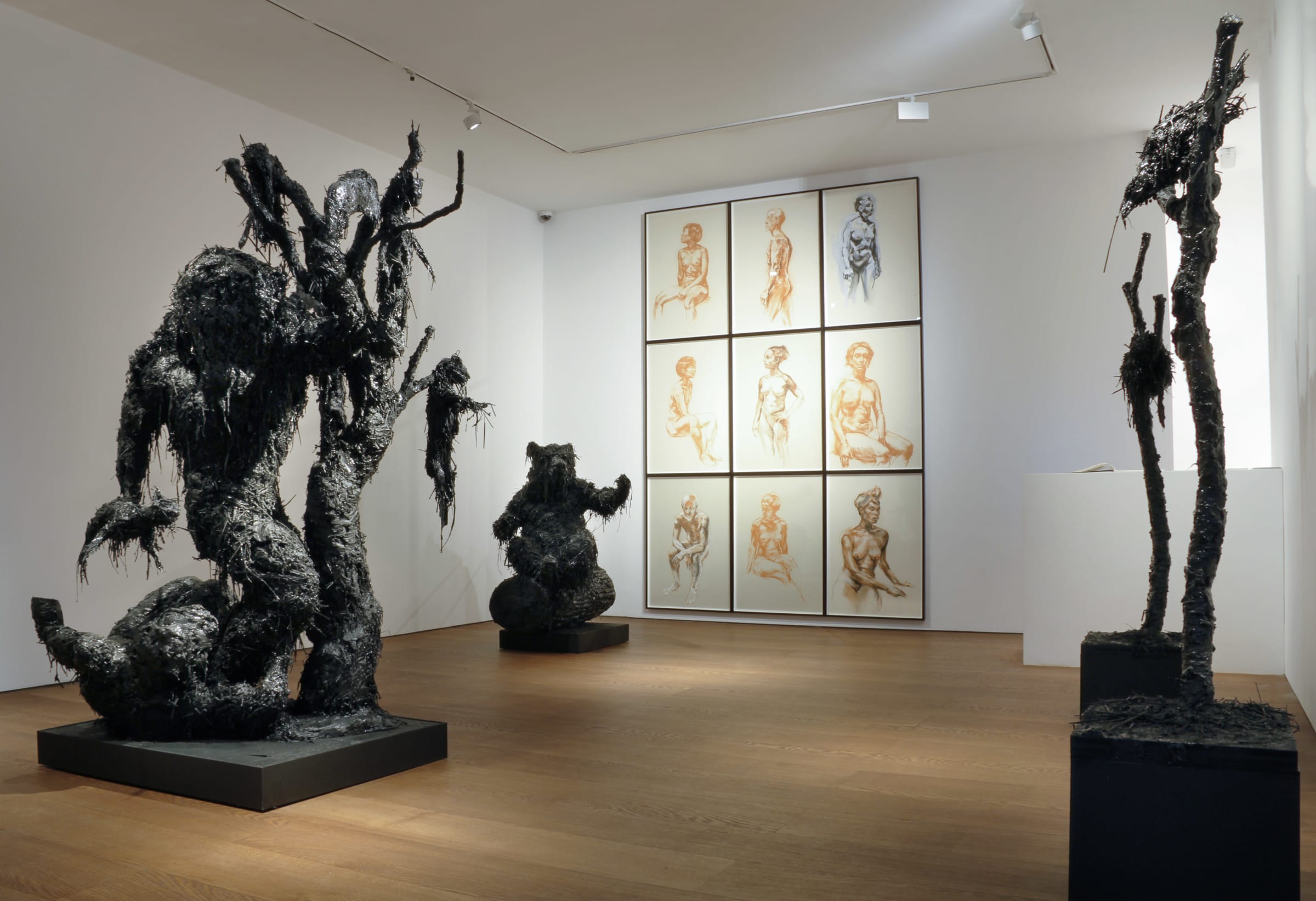Overview
Hicks is known primarily for her unsettling sculptural figures assembled from plaster and straw, which explore the complex perception of human character through the allegorical use of animal, human and hybrid forms.
Take a 3D tour of the exhibition here.
Flowers Gallery is pleased to present an exhibition of new sculptures and drawings by British artist Nicola Hicks. Hicks is known primarily for her unsettling sculptural figures assembled from plaster and straw, which explore the complex perception of human character through the allegorical use of animal, human and hybrid forms.
The central sculpture in the exhibition depicts the fabled figure of a Minotaur (half man - half bull) in the midst of destroying a classical statue, while murderously striking a cat with the jawbone of an ass. All around the Minotaur, feline corpses hang from the branches of a tree, creating a macabre vignette of brutality and madness. The accompanying presence of Crow Dance, a sentry human figure with a birdlike head and winged body, appears ominous, as though a portent of trouble to come.
Mythological tales and creatures such as bears, cats and crows have, over time, provided Hicks with rich subject matter. By weaving fables with personal and domestic narratives, Hicks allows for multiple layers of meaning to emerge from their common themes.
Hicks’ use of plaster and straw evokes the rawness of the body through the suggestion of exposed networks of tissue and bristling nerve endings. At times slick and smooth, or rough and clotted, the haptic surface energy captures the sensations of skin, fur and feathers. The straw gives the plaster its body (alongside other miscellaneous matter which may at times be scooped from the studio floor) while also introducing line as an integral structural component to their three-dimensional forms. Density and vitality are implied by vigorous crosshatching, balanced by the lightness and fragility of their delicate silhouettes.
Also on view are new drawings produced over the past year working directly from a model. Whereas Hicks’ usual drawing and sculpting process involves working largely from memory, this return to a direct and intimate method of working has opened up a more immediate response to her subjects, introducing a new fluidity of line to both her drawn and sculptural works.
Nicola Hicks was born in London in 1960 and studied at Chelsea School of Art and the Royal College of Art. In 1995 Hicks was awarded an MBE for her contribution to the visual arts. Hicks’ sculpture and drawings have been presented in numerous international museums and galleries and she has completed several public commissions including large scale sculptures at Schoenthal Monastery, Langenbruck, Switzerland. Recent solo exhibitions include Tayloe Piggott Gallery, Wyoming USA; Sorry, Sorry Sarajevo, St Paul’s Cathedral, London; Sculpture by Nicola Hicks at the Yale Center of British Art, New Haven, United States; and her work was included in The Universal Addressability of Dumb Things, curated by Mark Leckey, as part of the Hayward Touring series at venues across the UK during 2013.
Hicks is known primarily for her unsettling sculptural figures assembled from plaster and straw, which explore the complex perception of human character through the allegorical use of animal, human and hybrid forms.

